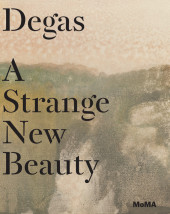 Neuerscheinungen 2016Stand: 2020-02-01 |
Schnellsuche
ISBN/Stichwort/Autor
|
Herderstraße 10
10625 Berlin
Tel.: 030 315 714 16
Fax 030 315 714 14
info@buchspektrum.de |

Carol Armstrong, Jodi Hauptman
(Beteiligte)
Edgar Degas
A Strange New Beauty
2016. 240 S. 25,5 cm
Verlag/Jahr: MUSEUM OF MODERN ART (NEW YORK) 2016
ISBN: 1-63345-005-8 (1633450058)
Neue ISBN: 978-1-63345-005-9 (9781633450059)
Preis und Lieferzeit: Bitte klicken
A towering figure in 19th-century art, Degas is best known as a painter and chronicler of the ballet. In the 1870s, during an era of enthusiasm for experimental printmaking, Degas was introduced to the monotype process drawing in black ink on a metal plate that was then run through a press, typically resulting in a single print. Captivated by the mediums potential, Degas made more than 300 monotypes during two discrete bursts of activity, from the mid-1870s to the mid-1880s, and again during the early 1890s. Taking the medium to new and radical heights, the artist abandoned the academic drawing style of his youth, inventing a new repertoire of mark-making that included wiping, scratching, abrading, finger printing and rendering via removal. Frequently, he used monotypes as a starting point from which an image could be reworked, revised, and re-crafted, often with pastel. Degas explored a variety of subject matter in these works, including scenes of modern life; harshly illuminated café singers; ballet dancers onstage, backstage, or in rehearsal; the life of the brothel; intimate moments at the bath; and landscapes. Degass engagement with monotype had broad consequences for his work in other mediums; repetition and transformation, mirroring and reversal all essential to Degass work in monotype was an ongoing logic of his work in drawing, painting, and pastel. Published to accompany an exhibition at The Museum of Modern Art, this richly illustrated catalogue presents approximately 180 monotypes along with some 50 related works, including paintings, drawings, pastels, sketchbooks and prints. Essays and case studies by curators, scholars and conservators explore the creative potency of Degass rarely seen monotypes, and highlight their impact on his wider practice.


